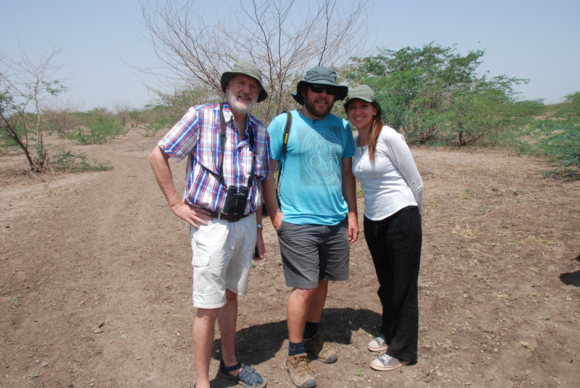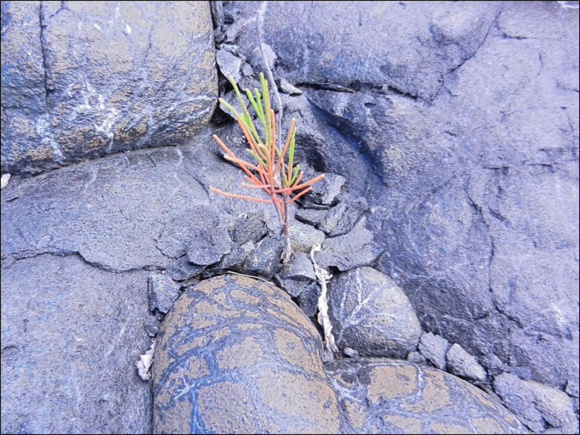25 October 2021 | By Jorge Ramírez-Albores
A recent study by Dr Jorge Ramírez-Albores (División de Ciencias Ambientales, Instituto Potosino de Investigación Científica y Tecnológica, A.C. & Instituto de Ciencias Agropecuarias y Rurales, Universidad Autónoma del Estado de México), C·I·B Director Prof Dave Richardson, and an international team of researchers sheds light on the invasion dynamics of the Peruvian peppertree (Schinus molle).
The tree, native to the Andes in South America, has been introduced, planted, and naturalized in several regions of the world, including South Africa. It has been introduced mainly to urban areas and farms as an ornamental tree, and along drainage lines, water bodies, agricultural fields, and roads as an amenity. The successful introduction of the Peruvian peppertree in non-native ranges is attributed to its high drought- and heat tolerance, its ability to compete for nutrients and light, its fast growth rate, and its prolific seed production.
The team’s study focused on the modeling and comparison of the regional and global climate niches of the tree. The long residence time (time since the first record of the tree in a region) and large extent of plantings and invasion of it across multiple regions made this a good species for such a study. This comparison allowed the team to infer the stage of invasion for Peruvian peppertree and to determine which regions are most susceptible to invasion.
Global models indicate that the highest habitat suitability occurred in arid and semi-arid climates. However, the global model for planted populations had a higher habitat suitability in arid and semiarid regions, with a low and medium habitat suitability in temperate regions; this was similar for the regional models. The coverage area of habitat suitability of naturalized populations in its native region was the highest, whereas the coverage of planted populations was lower.
For the niche space (or geographical space), the highest proportion of the predicted presences for naturalized and planted populations fell within the regions with “stabilized” populations (where most observed species records fall within an area predicted to be suitable by both the global and the regional model). In specific cases of the planted populations of Australia and South Africa, a substantial proportion of predicted presences fell within “sink” populations (where records fall outside suitable areas predicted by both models). However, in the niche space, in the range associated with native regions, in both the naturalized and planted populations the highest proportion of predicted presences was within sink populations.
The global invasion of Peruvian peppertrees suggest source-sink dynamics from the native to the invaded range, and its populations are found at different stages of invasion in Australia, California, Mexico, and South Africa. Although most Peruvian peppertree populations are stable, some exhibit high extinction risk (and persist as sink populations).
The findings suggest that in Mexico and California, both naturalized and planted populations of Peruvian peppertree are stabilized, whereas only naturalized populations in natural environments of Australia and South Africa are stabilized.
“This study provides a preliminary approach for understanding the process of invasion by this invasive tree,” said Jorge E. Ramírez-Albores. “It provides a way of elucidating the dimensions of the invasion debt that clearly exists for Schinus molle in many areas. Such insights will be useful for developing strategies for the management of this important invasive tree to avoid or at least reduce future impacts in recipient ecosystems”.
Read the full paper
Ramírez-Albores, J.E., Richardson, D.M., Stefenon, V.M., Bizama, G.A., Pérez-Suárez, M. & Badano, E.I. 2021. A global assessment of the potential distribution of naturalized and planted populations of the ornamental alien tree Schinus molle. NeoBiota 68, 105–126. https://doi.org/10.3897/neobiota.68.68572
For more information, contact Jorge E. Ramírez-Albores at jorgeramirez22@hotmail.com

Read a related paper that explores how climate change is likely to change the invasion dynamics of Peruvian peppertree in South Africa:
Richardson, D.M., Iponga, D.M., Roura-Pascual, N., Krug, R., Thuiller, W., Milton, S.J. & Hughes, G.O. 2010. Accommodating scenarios of climate change and management in modelling the distribution of the invasive tree Schinus molle in South Africa. Ecography 33, 1049-1061
https://onlinelibrary.wiley.com/doi/epdf/10.1111/j.1600-0587.2010.06350.x
Other related papers:
Ramírez-Albores, J.E., Bustamante, R.O. & Badano, E.I. 2016. Improved predictions of the geographic distribution of invasive plants using climatic niche models. PLoS One 11(5): e0156029. https://doi.org/10.1371/journal.pone.0156029
Ramírez-Albores, J.E., Bizama, G.A., Bustamante, R.O. & Badano, E.I. 2020. Niche conservatism in a plant with long invasion history: the case of Peruvian peppertree (Schinus molle, Anacardiaceae) in Mexico. Plant Ecology and Evolution 153(1): 3-11. https://doi.org/10.5091/plecevo.2020.1562
Guerra-Coss F., E.I. Badano, I.E. Cedillo-Rodríguez, J.E. Ramírez-Albores, J. Flores, F. Barragán-Torres and J.A. Flores-Cano. 2021. Modelling and validation of the spatial distribution of suitable habitats for the recruitment of invasive plants on climate change scenarios: an approach from the regeneration niche. Science of the Total Environment 777: 146007. https://doi.org/10.1016/j.scitotenv.2021.146007



